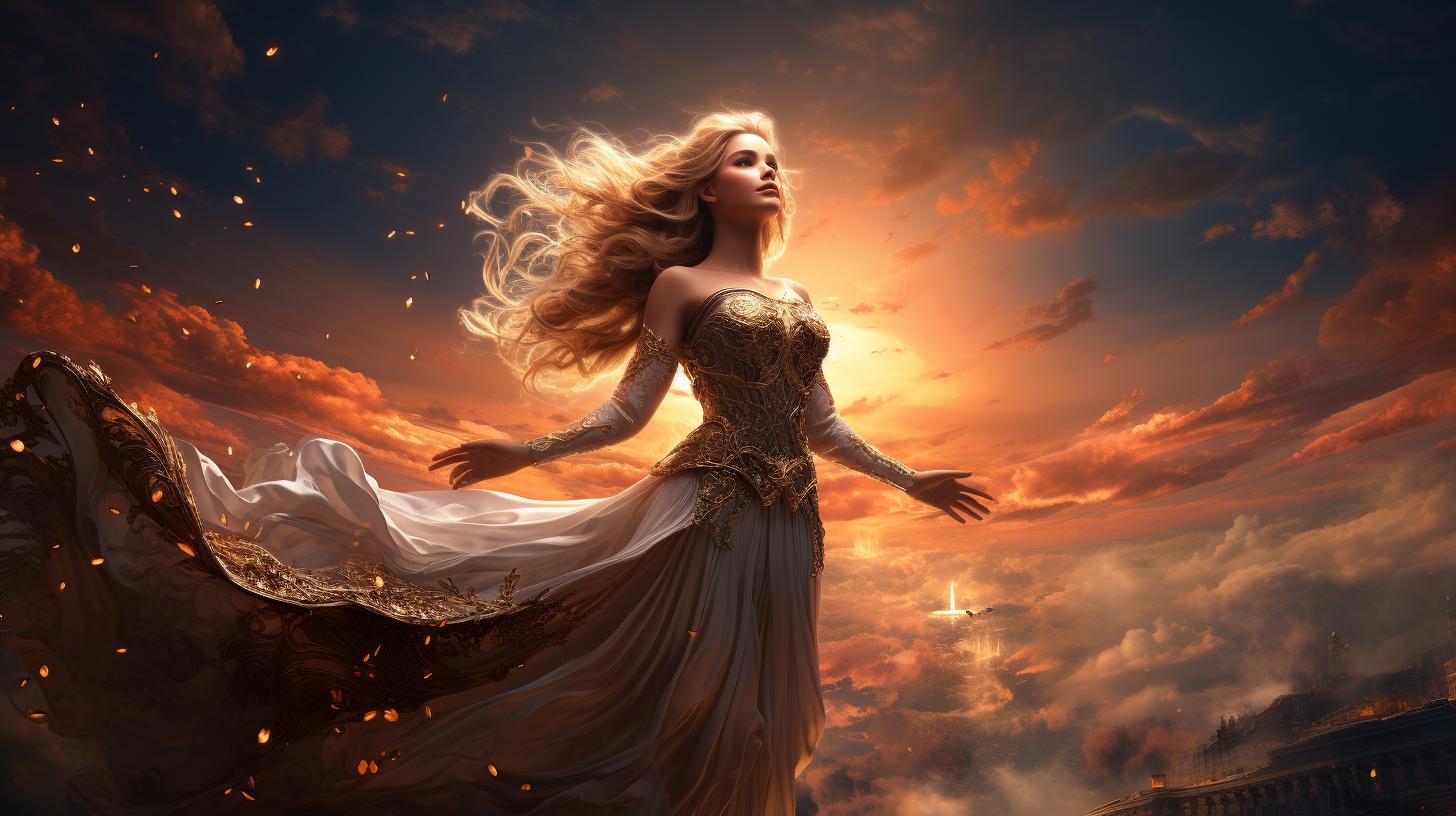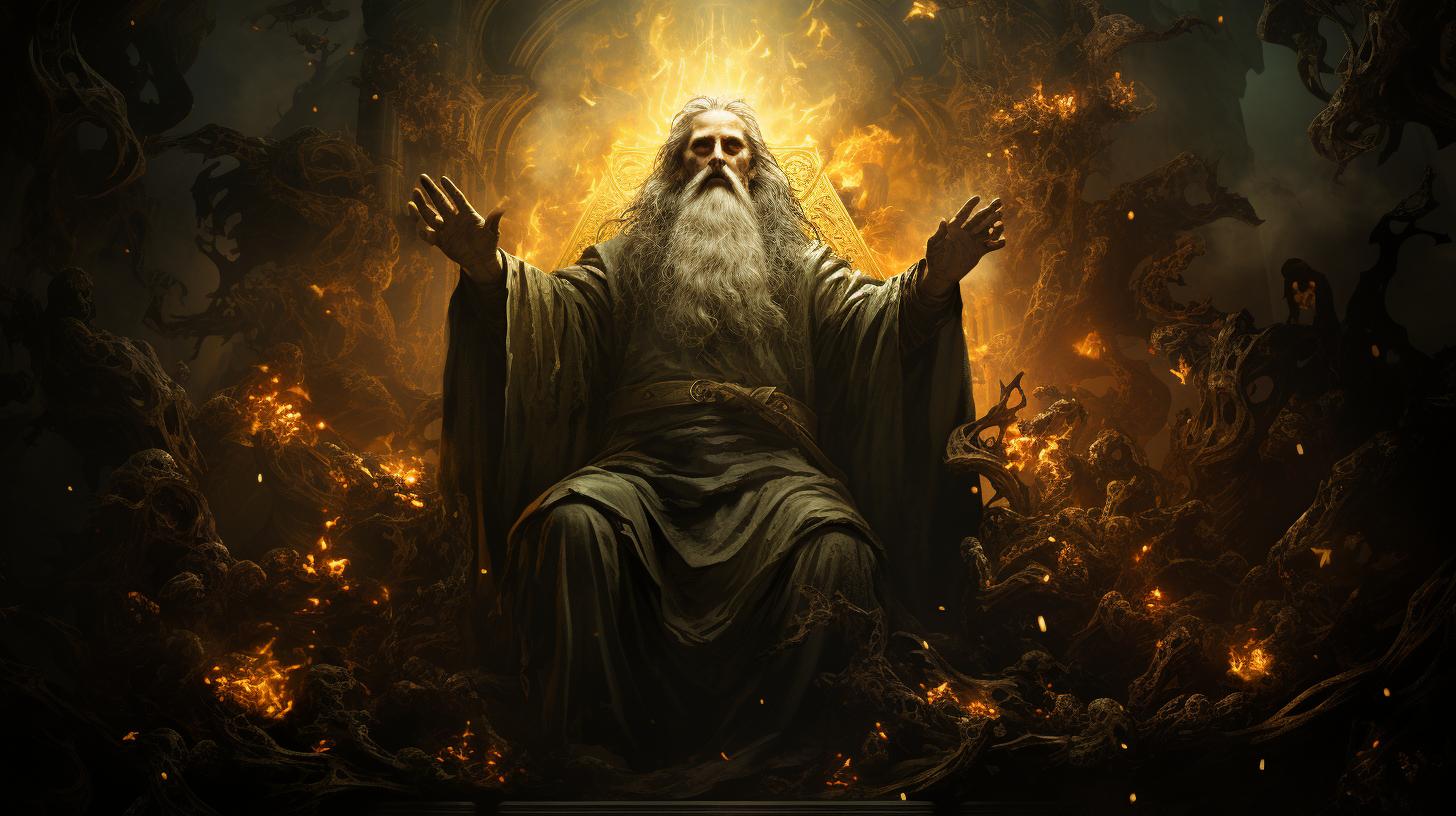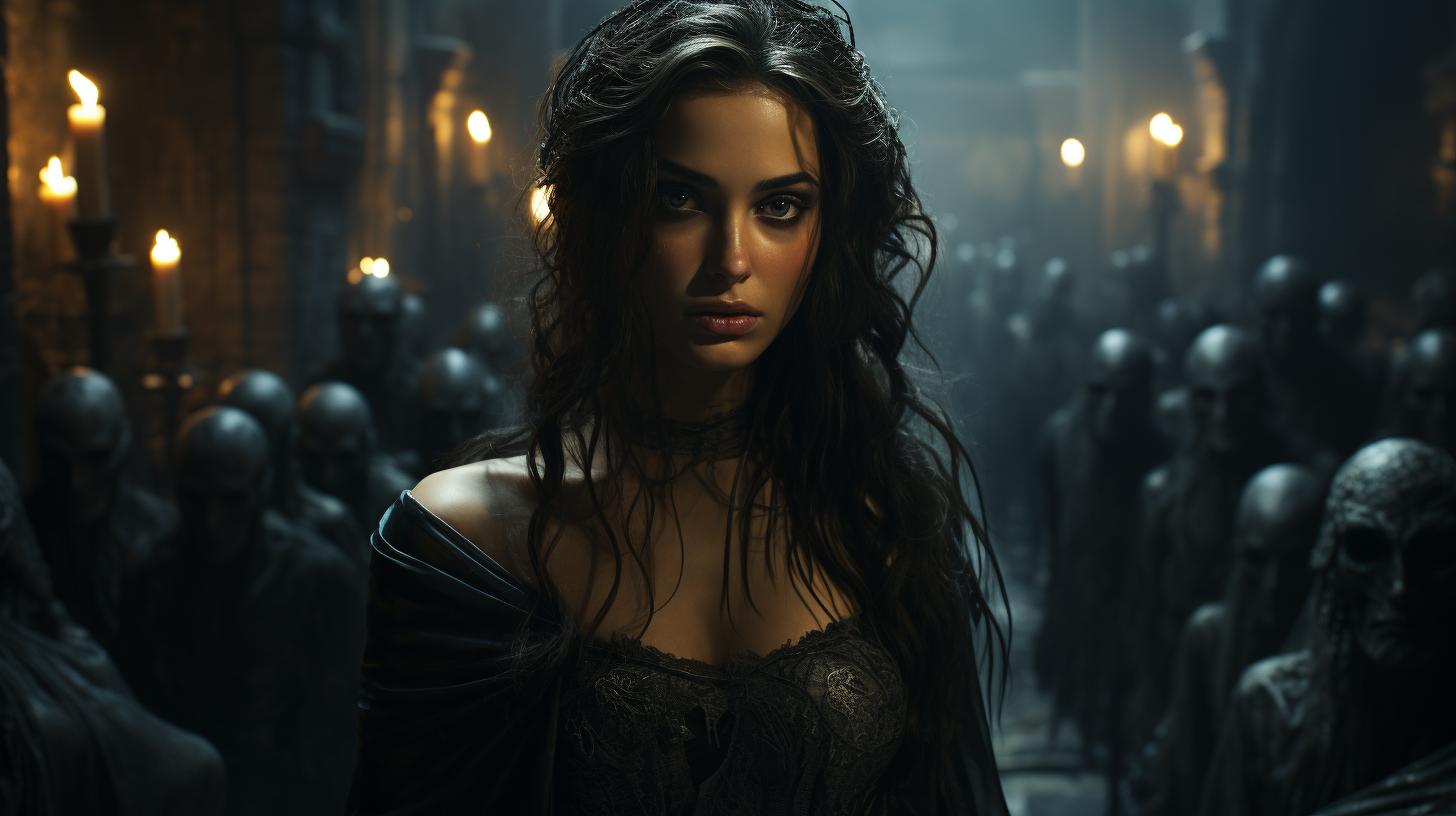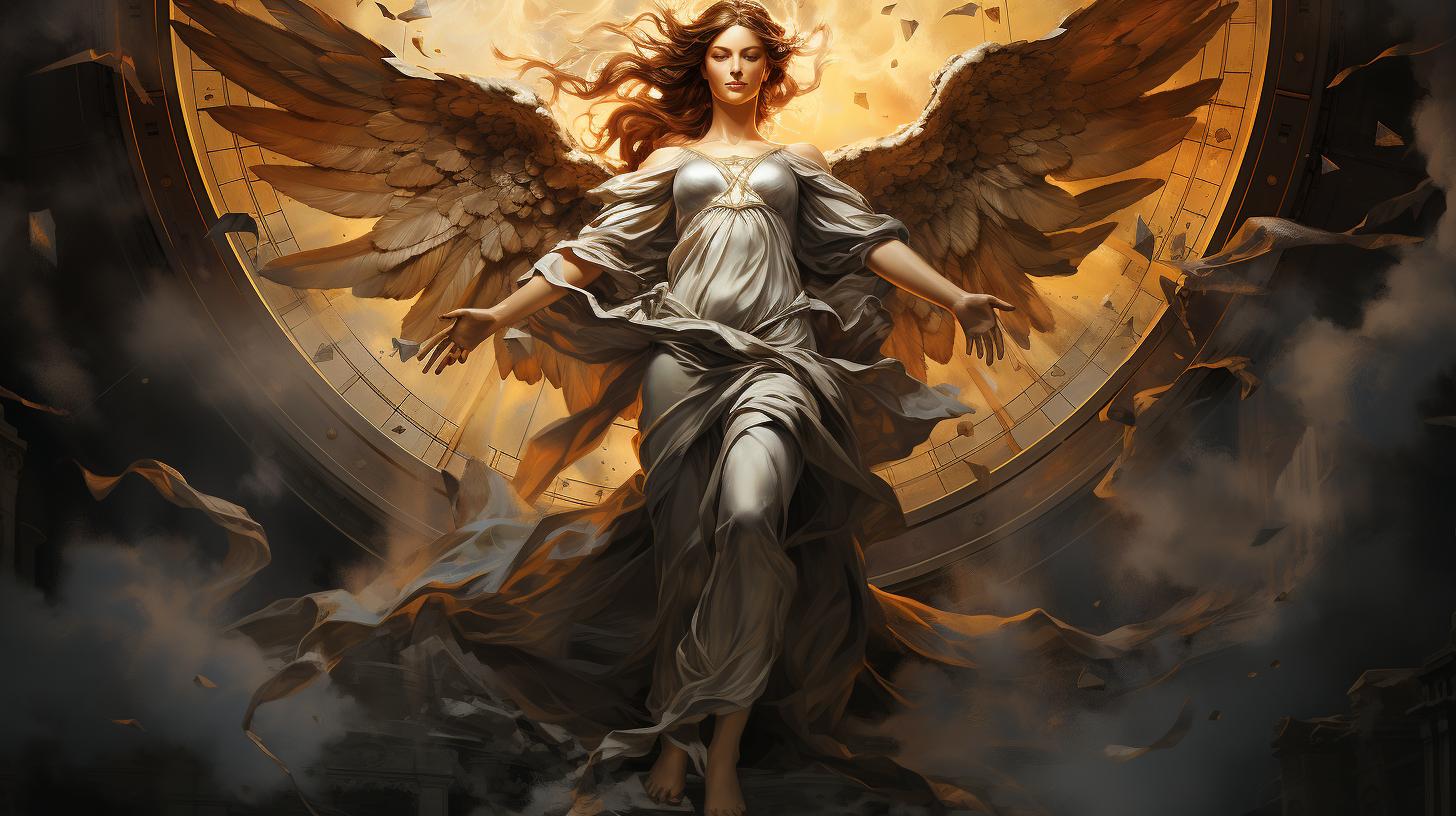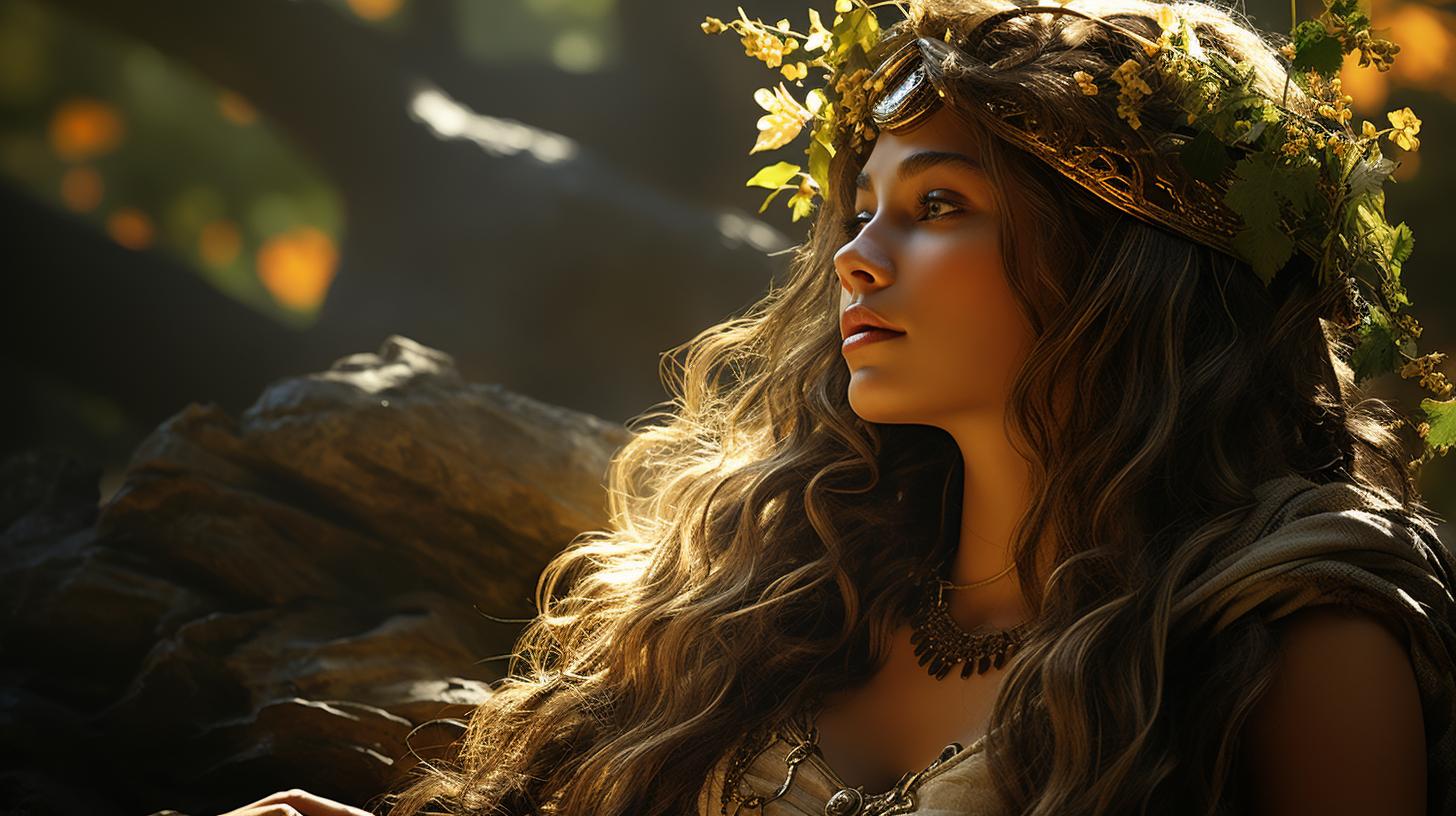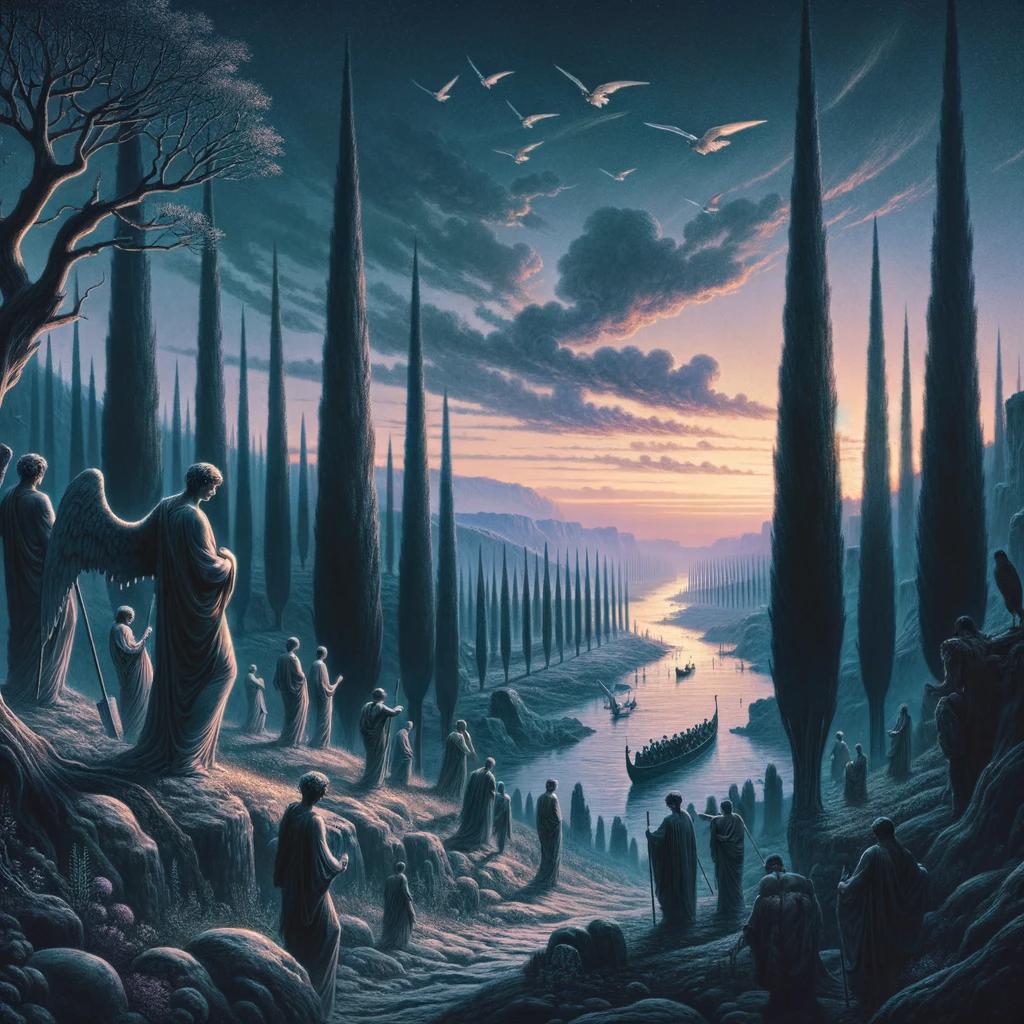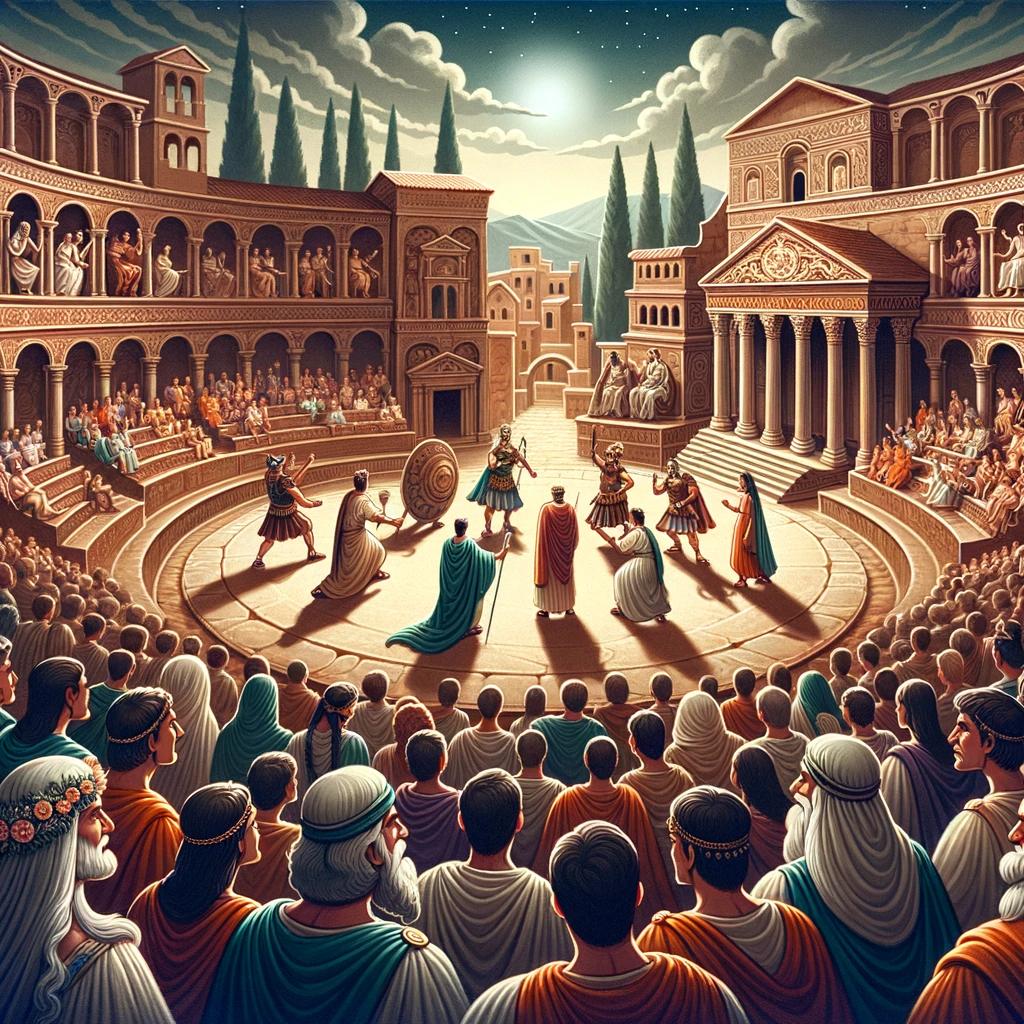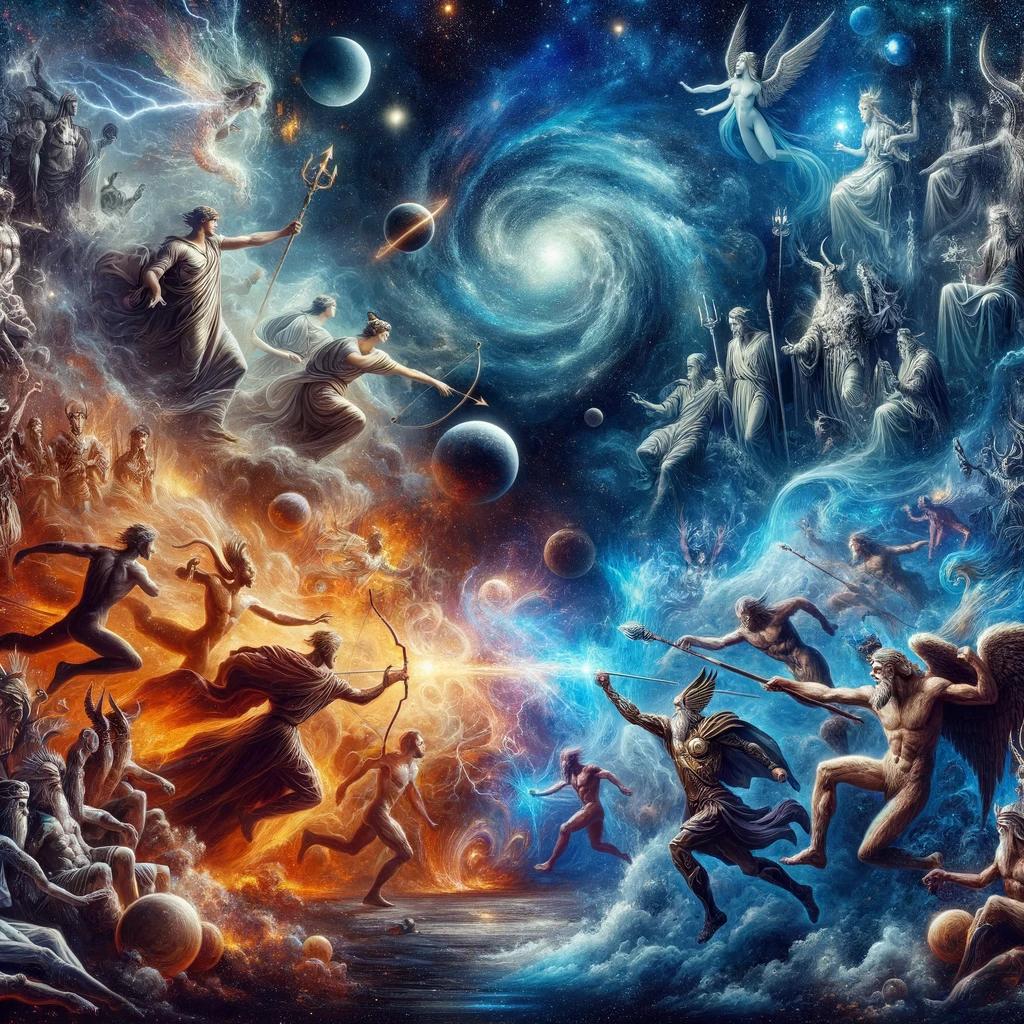Aurora: The Roman Goddess of Dawn Unveiled
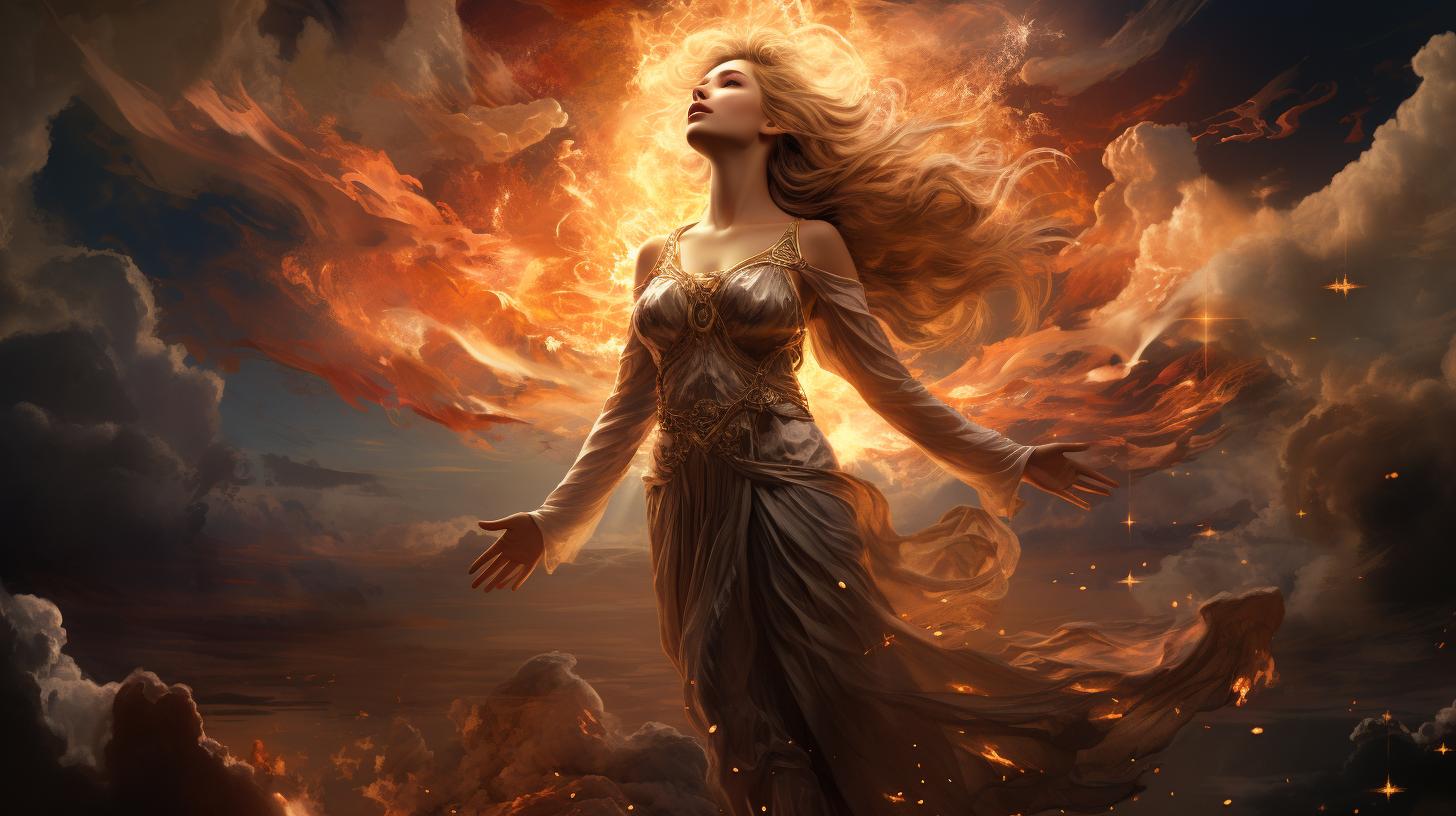
Aurora, the Roman goddess of dawn, holds a significant place in ancient mythology. As the daughter of Titans Hiperion and Tea, and sister to Helios and Selene, she emerges each day from the river Oceanus to bring light and disperse the night.
Known for her amorous relationships with mortal men, Aurora’s story captivates with tales of infatuation and romance. This article explores her symbolism, attributes, motherhood, and her connection to the mesmerizing Aurora Borealis and Australis lights in the night sky.
Discover the intriguing world of Aurora, a goddess whose beauty heralds the break of day.
Background of Aurora Roman Goddess of Dawn
Aurora, the Roman goddess of dawn, has a rich background rooted in ancient mythology. Her story was influenced by both Greek and Roman beliefs, merging the figures of Eos and Aurora.
In ancient Greek mythology, Eos was the goddess of the dawn, while Aurora became her Roman counterpart.
Ancient Mythology: Eos and Aurora
Eos, also known as Aurora in Roman mythology, was revered as the goddess who heralded the dawn. She emerged each day from the oceanic river Okeanos, spreading light to dispel the darkness of the night.
As the daughter of the Titans Hiperion and Tea, Eos was connected to the powerful forces of the heavens.
Roman Influence on Aurora Mythology
The Romans incorporated elements from Greek mythology into their own beliefs, adapting Eos into Aurora. This synthesis reflected the cultural exchange between the two civilizations. Aurora took on a prominent role as the Roman goddess of dawn, capturing the imagination of the ancient Romans.
Cultural Significance of Dawn Goddesses
Dawn goddesses like Aurora held significant cultural importance. They symbolized the transition from darkness to light, embodying the hope and renewal brought by each new day. People revered Aurora for the beauty and splendor she showcased in the early hours, while also recognizing the power and life-giving qualities of the dawn.
Aurora’s intricate background and intertwining mythology make her a captivating figure in Roman folklore. Exploring her symbolism and relationships with other deities sheds light on her influence and legacy.
Symbolism and Attributes of Aurora
In the realm of mythology, Aurora, the Roman goddess of dawn, carries with her a rich symbolism and distinctive attributes.
Let us delve into the fascinating traits that define this divine figure.
Daughter of Titans: Hiperion and Tea
Aurora, known as Eos in Greek mythology, emerges as the daughter of the Titans Hiperion and Tea. As the offspring of such powerful beings, she possesses inherent strength and divine lineage.
Siblings: Helios and Selene
Helios, the god of the sun, and Selene, the goddess of the moon, share the parentage of Aurora. This sibling bond connects their dominions and highlights the celestial influence they exert over the world.
Aurora’s Chariot and the Dawn Announcement
Every day, Aurora embarks on her celestial journey in a magnificent chariot pulled by two spirited horses. This grand spectacle not only marks the beginning of the day but also serves as a proclamation, heralding the arrival of dawn and dispelling the darkness.
‘Rosa-Dedo’: Colors of the Morning Sky
Aurora earned the epithet ‘rosa-dedo’ due to the enchanting colors that paint the sky during sunrise. The hues of pink, orange, and gold that adorn the horizon create a breathtaking display, paying homage to the goddess’s presence and influence.
Aurora’s Love Affairs and Romances
Aurora, the Roman goddess of dawn, was known for her infatuation with mortal men. Influenced by the goddess of love, Afrodita, Aurora had numerous lovers throughout her existence. These passionate affairs became an integral part of her mythical narrative, showcasing her insatiable desires and the consequences they entailed.
Infatuation with Mortal Men
Aurora’s infatuation with mortal men was a common theme in her stories. She was drawn to their fleeting beauty and mortal nature, igniting passionate relationships that left lasting impacts on both mortals and immortals alike.
Her allure was irresistible, and she captivated the hearts of countless brave warriors and noble princes.
Tithonus: Immortality without Eternal Youth
One of Aurora’s most famous lovers was the Trojan prince Tithonus. Mesmerized by his charm and beauty, she granted him the gift of immortality. However, in her haste, she forgot to include eternal youth in the deal.
As a result, Tithonus was cursed with unending old age, trapped in a deteriorating body for eternity.
Cephalus: Atenian Abduction and Release
Another memorable romantic encounter was Aurora’s abduction of the Athenian hunter, Cephalus. She became infatuated with him and took him against his will. However, Aurora eventually released him, realizing the unjust nature of her actions and the love he had for his wife.
This tale highlighted the complexities of love and the consequences of impulsive actions.
Other Poetic Depictions of Aurora’s Lovers
Aurora’s love affairs with mortal men inspired poets throughout the ages. In various poems, her passionate encounters were described and explored, adding depth and emotion to her character. These poetic depictions celebrated both the allure and the tragedy of love, reflected in the goddess’s turbulent relationships.
Aurora as a Mother and Dispenser of Morning Dew
Aurora, the Roman goddess of dawn, is not only associated with the break of day but also symbolizes motherhood and the dispenser of morning dew. This section explores the various aspects of Aurora’s role as a mother figure and her connection to the rejuvenating essence of the morning.
Motherhood: The Winds and the Evening Star
As a mother, Aurora is believed to be the parent of the winds, who are often depicted as her children. These winds, known for their swift movement and changeable nature, are seen as offspring of Aurora, inheriting her dynamic energy.
Additionally, Aurora is seen as the mother of Héspero, the evening star, who marks the transition from day to night.
Representations in Art: Wings and Carriages
Artistic portrayals of Aurora often emphasize her maternal role. She is depicted with wings, symbolizing her swift arrival and departure at daybreak. These wings represent the protective nature of a mother’s embrace, as she watches over the world during the early hours of the morning.
Aurora is also often shown riding in a majestic carriage, pulled by immortal horses. This imagery further highlights her divine status and her ability to guide the dawn.
Eos as the Roman Homologous Goddess of Aurora
Eos, also known as Aurora, can be considered as the Roman equivalent of the Greek goddess Eos.
This link between the Roman and Greek mythology further showcases Aurora’s connection to motherhood and the dawn. The similarities between Eos and Aurora demonstrate the universality of the concept of the goddess of dawn across different cultures.
Eos Identified with Hemera: Primordial Goddess of Day
In some accounts, Eos is identified with Hemera, the primordial goddess of day. This further highlights Aurora’s association with the fundamental aspects of daylight and the awakening of the world. The merging of these two deities underscores Aurora’s importance as a central figure in the cycle of day and night, embodying the essence of the morning and the beginning of a new day.
Aurora’s Connection to Aurora Borealis and Australis
The captivating goddess Aurora, synonymous with the Roman goddess of dawn, holds a remarkable association with the enchanting natural phenomena known as the Aurora Borealis and Australis. These mesmerizing lights illuminate the night sky, displaying a vivid and colorful display that closely resembles the magnificent cloak Aurora adorns while traversing the heavens.
Aurora – The Northern/Southern Lights
Aurora Borealis, commonly referred to as the Northern Lights, graces the northern hemisphere with its celestial dance. On the other side of the world, Aurora Australis, also known as the Southern Lights, illuminates the southern skies.
These awe-inspiring lights are a result of an extraordinary interaction between solar particles and the Earth’s atmosphere, creating a breathtaking spectacle that captivates all who witness it.
Natural Phenomenon of Colored Skies at Night
The Aurora Borealis and Australis paint the night sky with ethereal shades of green, red, blue, and purple, transforming the darkness into an otherworldly kaleidoscope of colors.
The mesmerizing display often evokes a sense of awe and wonder, as if the gods themselves were showcasing their artistic prowess. It is a vivid reminder of the beauty and magnificence of the natural world.
Interaction of Solar Particles with Earth’s Atmosphere
The spectacular light show is the result of solar particles, mainly electrons and protons, colliding with molecules in the Earth’s atmosphere. As these charged particles excite the atoms and molecules, they release energy in the form of light, creating the mesmerizing glow of the Aurora Borealis and Australis.
The intensity and colors of the lights depend on the type and concentration of gases present in the atmosphere at that particular moment.
Naming of Aurora Lights after the Goddess
The ethereal light phenomena were aptly named after the goddess Aurora, as the stunning display mirrors the colors and radiance associated with her divine presence. The celestial beauty of the Aurora Borealis and Australis resonates with the mythological tales of Aurora’s role as the bringer of light and herald of the dawn.
The connection between the goddess and these natural wonders serves as a timeless reminder of the enduring impact and influence of ancient mythology and its ties to the natural world.
See Also
Other Roman and Greek Gods and Goddesses
Explore the vast pantheon of Roman and Greek deities, each with their own unique stories and attributes.
From powerful gods like Zeus and Jupiter to goddesses of love like Aphrodite and Venus, the ancient mythologies are filled with fascinating characters waiting to be discovered.
Greek Mythology: Hesiod Theogony and Pseudo-Apollodorus
Dive deeper into the rich world of Greek mythology by exploring Hesiod’s Theogony and Pseudo-Apollodorus’ writings.
These ancient texts provide valuable insights into the creation of the gods and the intricate relationships between them. Unravel the tales of divine beings that have captivated generations.
Aurora in Popular Culture and Literature
Delve into the influence of Aurora, the Roman goddess of dawn, on popular culture and literature.
From references in classical pieces to contemporary works, discover how this enchanting figure has inspired artists, writers, and storytellers through the years. From paintings to poetry, Aurora’s presence is felt in various forms of artistic expression.
- The Role of Aurora in Shakespeare’s Sonnets
- Aurora: Dawn’s Muse in Romantic Poetry
- Aurora: A Symbol of Transformation in Art Nouveau
- Aurora in Contemporary Fantasy Literature
Open new doors of exploration and unravel the interconnected web of gods and goddesses in ancient Roman and Greek mythologies.
Immerse yourself in the captivating tales of Aurora and discover her influence in popular culture and literature.
.

